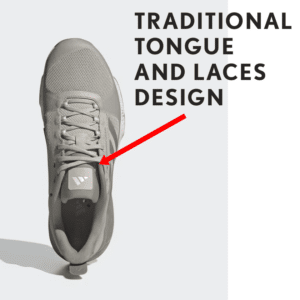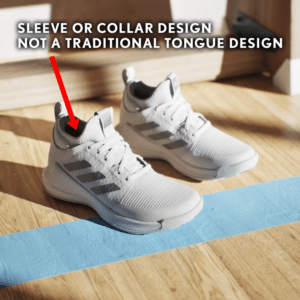The ankle remains the primary site of injury in high school, collegiate and professional basketball for both genders. Regardless of an athlete’s physical conditioning, preventing ankle injuries remains challenging. Such injuries often happen in scenarios where players go up for a rebound and land on another player’s foot, or they are cutting to the basket and mistakenly step off another player’s shoe. These contacts can lead to the common inversion ankle sprain, which occurs when the ankle is forced to rotate excessively inward.

Understanding Inversion Ankle Sprains
Inversion ankle sprains can stretch and sometimes tear the ligaments holding the ankle joint together, leading to extended bench time that could range from a few days to weeks, depending on the injury’s severity. Even after resting to allow the ankle to heal, the ligaments remain somewhat stretched, making the ankle loose and unstable and prone to future ankle injuries. This cycle of recurring ankle injuries can be interrupted or slowed down by wearing a preventive ankle brace.
The Role of Preventive Ankle Braces
The term “Preventive Ankle Brace” means wearing an ankle brace during every practice and game to help prevent ankle injuries or lessen the severity should an injury occur. The right ankle brace should be determined by evaluating the athlete’s injury history and the type of basketball shoe worn.
The Importance of Basketball Shoes
Basketball shoes play a vital role in how an ankle brace fits and feels. Some basketball shoe designs will dictate the type of ankle brace needed as not all ankle braces will fit in every basketball shoe.
There are basically two types of basketball shoe designs:
1. Traditional Tongue and Laces: These shoes allow the laces to spread out enough to fit the ankle brace inside the shoe. They offer the best fit for any type of brace.

2. Sleeve or Collar Design: These shoes lack a traditional tongue, making the opening much smaller and very difficult to fit the ankle brace inside. Depending on your ankle injury history, you must first determine the type of ankle brace you need and then select the style of basketball shoe that fits best with that ankle brace.

Evaluating Injury History and Ankle Brace Type
1-3 Previous Ankle Injuries: For athletes with 1-3 previous minor ankle injuries, an entry-level ankle brace made with fabric that laces up, called Lace-Ups, might suffice. Lace-Ups with figure-8 straps are preferred as they wrap around the ankle similarly to a tape job performed by an athletic trainer. Think of Lace-Up braces as a reusable tape job that can be applied before every practice and game, eliminating the need for an athletic trainer.
Pros of Lace-Up Ankle Braces:
- Inexpensive and readily available online or at sporting goods stores.
- Low profile, fitting in any style of basketball shoe.
Cons of Lace-Up Ankle Braces:
- Restrict natural up-and-down ankle movement, which is crucial for running and jumping.
- Fabric stretches out, migrates, and loses support rapidly during athletic activity.
Ultra Ankle® offers a Lace-Up ankle brace called the Ultra 360®. The Ultra 360® locks your ankle in place while the figure-8 straps provide 360º of support to help prevent excessive ankle rolling. Its multi-adjustable design allows you to customize your level of support.

4-5 Previous Ankle Injuries: For athletes with 4-5 previous ankle injuries, including one or more grade 2-3 injuries, more support is required. Plastic hinged ankle braces offer a structurally sound design and additional support needed for unstable ankles.
Pros of Plastic Hinged Ankle Braces:
- Move with the natural up-and-down movement of the ankle, not restricting performance, speed, agility, or vertical jump.
- Straps stay securely in place, maintaining long-lasting support throughout a practice or game.
Cons of Plastic Hinged Ankle Braces:
- Larger than fabric ankle braces, requiring more room in the shoe.
- May take a few practices to break in and become comfortable.
Ultra Ankle® offers a plastic hinged-cuff ankle brace called the Ultra Zoom®. The Ultra Zoom® has a soft, flexible Performathane® shell that uses body heat to form a custom fit to the ankle for comfortable, long-lasting support. Its hinge design allows for natural ankle range of motion to enhance performance and keep muscles strong. The Ultra Zoom® is our preferred basketball ankle brace with exceptional durability to last multiple seasons. A full ONE YEAR warranty on every component.

Conclusion
Selecting the right ankle brace involves considering both the injury history and the type of basketball shoe. By understanding the benefits and limitations of each type of brace, athletes can make informed decisions to protect their ankles and enhance their performance on the court. At Ultra Ankle®, we are committed to providing high-quality performance ankle braces designed to meet the needs of basketball players at all levels. You’ll play better and play more, losing less time to ankle injuries.
References
- American Orthopedic Foot & Ankle Society. Ankle Sprain: https://www.aofas.org
- National Library of Medicine. Ankle Sprains: Causes, Symptoms, and Treatment: https://www.ncbi.nlm.nih.gov
- American Academy of Orthopedic Surgeons. Ankle Sprains Overview: https://www.orthoinfo.org
